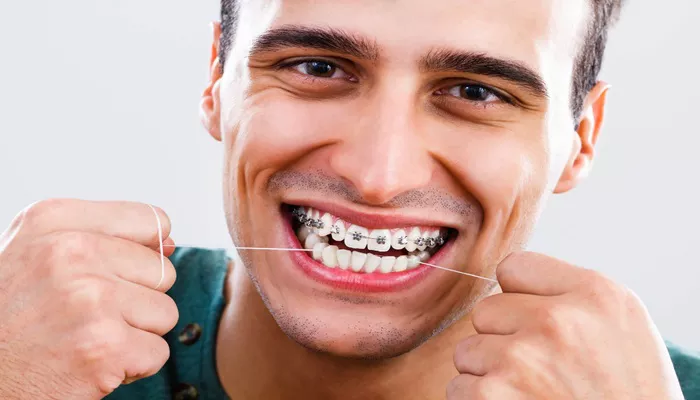Orthodontic treatment helps align teeth and improve oral health. However, many people worry about the pain involved. The level of discomfort varies based on different factors. Understanding what to expect and how to manage the pain can make the experience easier.
Why Does Orthodontic Treatment Cause Pain?
Pain occurs because orthodontic appliances apply pressure to teeth. This pressure causes gradual movement, which can lead to discomfort. The following factors contribute to pain:
Orthodontic Pain: What to Expect and How to Manage It
Pressure on the Teeth
- Braces or aligners move teeth into the correct position.
- This movement causes soreness, especially after adjustments.
- Pain is usually mild to moderate.
Irritation from Orthodontic Appliances
- Brackets, wires, and aligners can rub against the gums and cheeks.
- This may cause sores or irritation.
- Wax can help reduce friction.
Soft Tissue Sensitivity
- The mouth needs time to adjust to new appliances.
- Gums and lips may feel sore initially.
- Discomfort usually decreases after a few days.
Pain Levels During Different Stages of Treatment
Pain When Getting Braces or Aligners
- Initial placement of braces or aligners can cause mild discomfort.
- The pressure on teeth may lead to soreness for the first few days.
- Pain is usually manageable with over-the-counter pain relievers.
Pain After Adjustments
- Braces require regular tightening to maintain progress.
- Adjustments may lead to pressure-related pain.
- Discomfort typically lasts for a few days.
Pain with Orthodontic Appliances
- Additional devices like expanders or rubber bands can increase pain.
- These appliances add extra pressure to guide tooth movement.
- The mouth adapts over time, reducing sensitivity.
Pain When Switching Aligners
- Clear aligners require frequent changes.
- Each new set applies pressure to shift teeth.
- Soreness usually fades within 48 hours.
Pain When Braces Are Removed
- Removing braces is not painful, but sensitivity may occur.
- Teeth and gums may feel tender after debonding.
- Mild discomfort disappears within a few days.
How Long Does Orthodontic Pain Last?
The duration of pain varies for each person. In general:
- Pain after placement lasts 3–5 days.
- Adjustments cause soreness for 2–3 days.
- Aligners may cause pain for 1–2 days per change.
- Soft tissue irritation may persist but improves over time.
Managing Orthodontic Pain Effectively
Over-the-Counter Pain Relievers
- Ibuprofen or acetaminophen can reduce pain.
- Take medication before adjustments for better relief.
- Avoid overuse to prevent dependence.
Cold Compresses
- Ice packs help numb pain and reduce swelling.
- Apply for 15–20 minutes at a time.
- Effective in the first few days after adjustments.
Orthodontic Wax
- Prevents brackets and wires from irritating soft tissues.
- Apply a small amount over rough edges.
- Replace as needed for continuous comfort.
Soft Foods Diet
- Eating soft foods reduces pressure on sore teeth.
- Ideal choices include:
- Mashed potatoes
- Yogurt
- Soup
- Scrambled eggs
Salt Water Rinses
- Helps heal sores and reduce inflammation.
- Mix warm water with salt and rinse gently.
- Repeat several times a day for relief.
Good Oral Hygiene
- Keeping teeth clean prevents irritation and infections.
- Use a soft-bristled toothbrush and fluoride toothpaste.
- Floss carefully to avoid discomfort.
Avoiding Hard and Sticky Foods
- Hard foods can increase pain and damage braces.
- Sticky foods can get stuck and cause irritation.
- Recommended to avoid until pain subsides.
When to Contact an Orthodontist
Pain should gradually improve over time. However, seek professional help if:
- Pain is severe and does not improve with treatment.
- Brackets or wires cause persistent wounds.
- Teeth feel excessively loose.
- There is swelling or signs of infection.
Conclusion
Orthodontic treatment involves some level of pain, but it is manageable. Most discomfort is temporary and improves as the mouth adjusts. Using pain management techniques can make the process easier. Understanding what to expect can reduce anxiety and help patients feel more confident during treatment.
Related topics:


